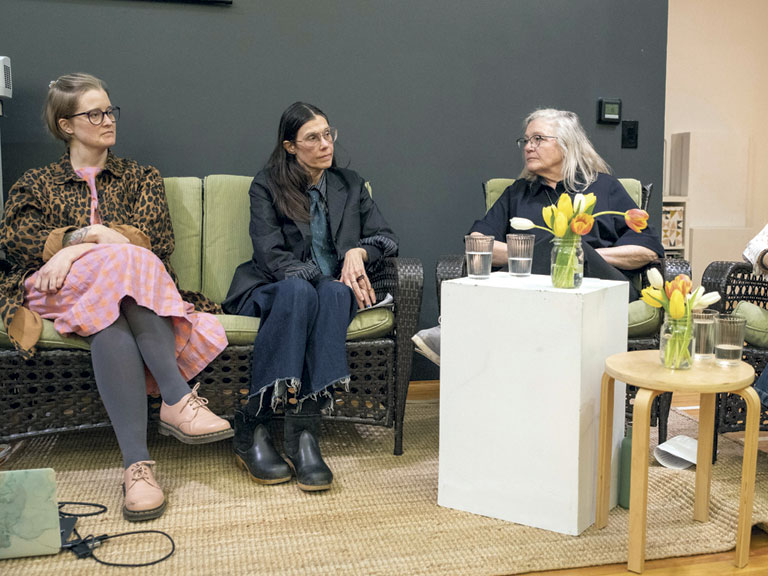County News
Art of the Possible

Exploring pathways between art and the natural world
Last Thursday evening, the County Arts’ speaker series, Art of the Possible, returned to The Armoury for its second event: Exploring Critical Pathways between Art and the Natural World. Moderated by Jaiya Gray, the event featured artists Stacey Sproule, Laura Millard and Valerie Carey, and landscape architect Victoria Taylor. The speaker series brings artists together to explore the power of the arts transform our understanding and open pathways to a more sustainable future. The inaugural Art of the Possible event was held in late 2024 and featured glass artist Sarah Hall and Otter Energy owner Tyler Blower.
This year’s theme centred on how these artists find inspiration in the natural world and how it drives their creative process. Laura Millard is a visual artist and is currently an Associate Professor at OCAD University. She spoke about her time during two art residences in Svalbard, in the Arctic Circle. The first was in 2019, on a sailing vessel with 22 other artists, scientists and researchers, where they were expected to perform crew duties as well. The second residency was last year, on a much larger ship. Part of the trip involved collecting discarded or abandoned fishing gear as well as plastic waste, of which there was a considerable amount even in the far northern ocean. Ms. Millard used some of the discarded gear to make drawings in the landscape— in one case dragging a 200-pound net through the snow—and then photographing the pattern from the air using a drone. These photographs were printed and then modified with graphite pencil and paint, ending with a 40-inch by 60-inch print for exhibition, or creating a 10-foot wide lightbox from recycled materials for larger installations. Her drawings used the repeated motif of a circle to symbolize that when it comes to climate change, countries are merely spinning their metaphorical wheels and not making any real progress. She noted that the melting icecaps are altering the fundamental notion of time by slowing down the spin of the earth, thereby making each day fractionally longer.
Victoria Taylor is a County-based landscape architect. One of her projects was the installation of temporary artworks along the Millennium Trail in conjunction with Conrad Beaubien’s “Walks with Thunder” series. She spoke about attending a retreat last year where she spent three days writing and reflecting on her professional practise, and she described how she approaches her landscape work. She said there are two critical pathways for her. The first is cultural, encompassing art, life and experiences, what she describes as “the poetry of life”. The second pathway is nature, encompassing the soil, water, plants, trees and surrounding life. “These exist in different regions of time and space. Culture moves at a fast pace and nature has its own rhythm,” she said. “My inspiration always happens when I slow down to the pace of landscape. I imagine the shifting elements that will be revealed over the course of the year. Where does the light break through? Where does the water sink in? Where are the places to linger and pause and breathe?”
Valerie Carew is a multidisciplinary artist in Toronto who explores human relationships with the land through fibre art, mixed media and performance art. She creates wearable textile pieces that mimic nature to help create a visually immersive story. “I’m interested in how we bring the wild into our domestic spaces, as in using floral patterns for nature replacement. I also use the body as a substrate for artwork, using a performance piece to animate the artwork,” she said.
The final presenter of the evening was Stacey Sproule, who was trained as a painter, but became attracted to things outside the two-dimensional world and embraced animation. “I began working in animation because of its ability to slow down and speed up time and reveal to us the magic of our world that is largely invisible,” she said. She spoke about her short animated film, Sojourn, which was inspired by the County’s South Shore. She carefully created hand drawn images from 2,500 video frames of insects, birds, people, frogs and flowers from the Point Petre area, and then painstakingly photographed each of these images mounted in a frame as she moved step by step along a trail to create a unique animated film. It took six months to do the drawings and then three days of photography to create the individual frames for the fourminute film.

Comments (0)